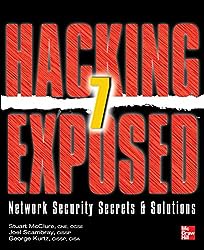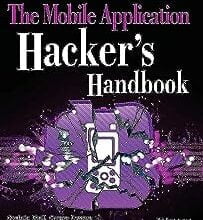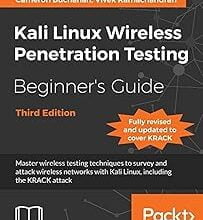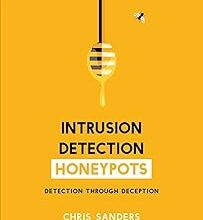Hacking Exposed 7: Network Security Secrets and Solutions
by Stuart McClure, Joel Scambray, and George Kurtz

No Secrets, No Surprises: Decrypting Hacking Exposed 7
Rated: 4.5/5
If you’re a budding bug bounty hunter or an aspiring cybersecurity professional, then Hacking Exposed 7: Network Security Secrets and Solutions by Stuart McClure, Joel Scambray, and George Kurtz is your next must-read. With a 4.5/5 rating from our squad, this book not only uncovers the secrets of network security but also equips you with actionable solutions. Buckle up as we decode the nuances of this cybersecurity gem.
A Structured Roadmap to Exploit and Defend
The first commendable aspect of this book is its brilliant structure. It follows a process-based approach, adhering to the mantra: “Footprint, enumerate, manipulate, escalate, traverse.” This provides readers with a detailed roadmap that mimics real-world hacking scenarios. From identifying a target to finally executing an attack, the reader is given a tour of a hacker’s journey. But it doesn’t stop there—the book transforms you into a hacker’s worst nightmare by providing counterstrategies for each vulnerability discussed. As McClure et al. emphasize, “Understanding your enemy’s strategy and planning your defenses accordingly is paramount to a successful defense.”
Real-world Applicability: From Theory to Practice
The book further shines in its dedication to real-world relevance. Here, we’re not just dealing with hypotheticals; the authors present case studies that ground the reader in the reality of network vulnerabilities. Take, for instance, the book’s treatment of SQL injection attacks. It doesn’t just tell you what SQL injection is; it walks you through how the attack occurs, the critical stages involved, and how to shield your network from such a breach.
The Intricacies of Password Cracking: A Case in Point
One of the most engrossing sections in the book deals with the art and science of password cracking. Here, the authors don’t just warn you about the dangers of weak passwords; they offer a hands-on exercise using tools like John the Ripper and Hashcat. This serves as a wake-up call. It’s easy to brush off the importance of strong passwords, but when you see how quickly a poorly chosen password can be decrypted, the point hits home hard.
What elevates this section even further is its actionable countermeasures. The authors don’t just leave you shocked and vulnerable; they equip you with tools and techniques for creating strong, uncrackable passwords and implementing two-factor authentication (2FA). This section is a masterclass in transforming you from a potential victim into a savvy defender.
The Art of Packet Sniffing: More than Just Eavesdropping
Another shining example from the book involves packet sniffing—basically, eavesdropping on network communication. Through real-world scenarios and exercises, the authors guide you on using tools like Wireshark to monitor network packets. This section provides an eye-opening revelation on how much data is floating around in network traffic, often unencrypted and ripe for the picking.
Again, the countermeasures are enlightening. By guiding you through the implementation of network encryption techniques and the setting up of Virtual Private Networks (VPNs), the book reinforces its central tenet: understanding vulnerabilities to fortify defenses.
Solutions-Centric Approach: An Ounce of Prevention
Another distinguishing feature is the book’s countermeasure strategy. Each section revealing a specific network vulnerability is followed by a “Countermeasures” part. This allows the reader to immediately transition from understanding a problem to implementing a solution. It’s like studying the anatomy of a disaster and then immediately learning fire safety—practical, actionable, and incredibly useful.
Authenticity Over Ideals: Room for Improvement
However, no book is without its blind spots, and Hacking Exposed 7 is no exception. Its primary shortfall lies in its assumed reader expertise. If you’re a rookie in the field, be prepared to consult external resources to catch up with some of the book’s advanced concepts.
Moreover, the book could use a refresh when it comes to its case studies. Technology evolves at breakneck speed, and while the book’s examples were groundbreaking at their time, an update reflecting modern security threats would be a welcome addition.
Stages of Learning: Best for the Mid-Tier
If we were to place this book on the novice-to-expert scale, it nestles comfortably between the “competent” and “proficient” stages. While not an introductory guide, it’s an invaluable resource for those looking to level up their skills, offering complex concepts in digestible, manageable portions.
The Final Verdict: Empower Yourself to Counteract
In a nutshell, Hacking Exposed 7 is a must-have in your cybersecurity library. While the book certainly has its areas for improvement, it succeeds in its core mission: to arm you with both the offensive and defensive tools you need to excel in network security. The authors remind us that “knowledge is power, but knowledge of your enemy is impenetrable.” With this mindset, they’re not just exposing secrets; they’re building fortresses.




